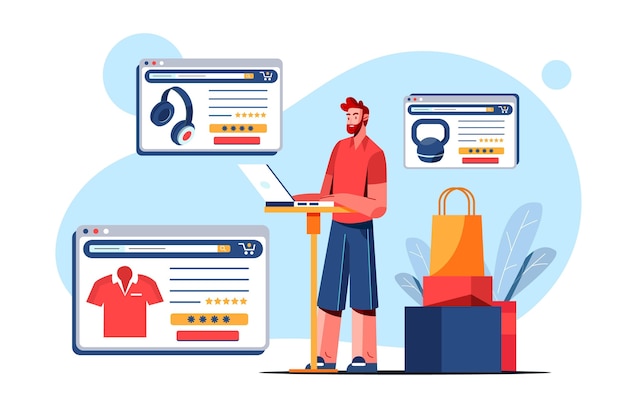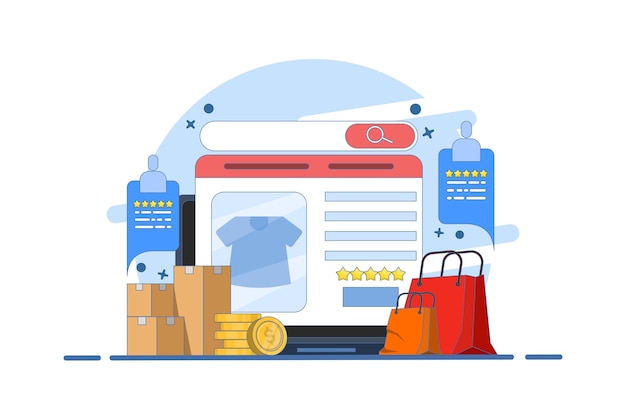
Discover the top 5 cost-effective reasons to choose a white-label online ordering system—save money, boost profits, retain control, and scale your brand easily.
Digital ordering has moved from fringe experiment to lifeline for restaurants and small hospitality brands. Guests now expect to scroll, tap, and pay on their screens, while operators chase ways to keep revenue in-house instead of handing it to third-party marketplaces.
A well-built white label online ordering system provides that sweet spot: speed of launch, familiar features, and your branding all without the six-figure budgets of custom code. Below are the five most financially persuasive reasons to move in that direction, trimmed to the essentials and expanded where the money changes hands. Delivety, an example of a flexible white-label online ordering platform, appears briefly throughout, but you can apply the logic to any serious vendor.
Real Savings Versus Custom Build
Before you even start thinking about cook-station timers or loyalty widgets, the first question every owner asks is, “How much will this cost me to build?” The short answer: a lot, if you insist on doing it from scratch.
A typical custom app or site demands a project manager, front-end and back-end engineers, a designer, QA testers, and, crucially, ongoing maintenance. That payroll burns from the first sprint and never really stops. A white label online ordering solution flips the script: pay a predictable subscription, piggyback on battle-tested code, and focus your budget on food quality and guest marketing.
Upfront Capital, Reimagined
One senior developer in a major metro commands $164 000 a year. Add another two engineers, a UI designer, and a QA contractor, and you are out over a quarter-million dollars before your first download. A white label partner like Delivety lets you upload your logo, set colors, drop in dishes, and accept live orders sometimes within 24 hours. That head start either saves capital or frees cash for more pressing needs like fixing the broken HVAC in July.
Ongoing Upgrades Without Surprise Invoices
Restaurants often overlook life-cycle costs. iOS updates, new payment regulations, or security patches hit without warning, demanding hours of dev time. White label providers bake those changes into the subscription. When Apple tweaks its privacy rules next year, the vendor’s team adjusts the codebase for every client simultaneously, sparing you individual invoices.
Bottom line: You trade giant, unpredictable checks for a single line item on your P&L, gaining enterprise-grade tech at a neighborhood-bistro price.
Commission-Free Revenue: Keep What You Earn
Many owners first embraced third-party marketplaces because of the instant visibility. Visibility, however, comes with commissions that quietly erode profit margins. A white label online ordering system removes that middleman toll booth, replacing a percent-of-orders fee with a flat, transparent subscription.
Right now, marketplace charges hover in the 15%-30% range per ticket. Once you reach any sort of sales volume, those percentages represent real cash, often more than rent. With a white label online ordering platform, you pay the same subscription fee whether you process one order or a thousand in a night. A POS-industry study from mid-2024 highlights the opportunity: consumers are willing to move toward direct ordering if the experience is good.
Retain Margin, Then Reinvest
With commissions gone, owners often experiment with smarter price ladders, adding premium sauces, beverage pairings, or limited-time bundles that guests won’t see on third-party menus. Because you own the channel, you answer to no parity clauses or algorithm changes. The extra cash can fund better ingredients, staff bonuses, or upgrades to front-of-house décor.
Build Loyalty Within Your Walls
Every order that lands in your database is an opportunity for remarketing. You can drop thank-you coupons, holiday preorders, or chef newsletters directly into inboxes, no need to pay again to reach a customer you already served. Delivety, for example, lets operators export email lists and plug them into Mailchimp or any CRM without extra fees, but most modern vendors offer similar hand-offs.
Operational Efficiency That Cuts Hidden Labor Costs
If you have ever balanced three iPads on the expo line, you know tech fragmentation kills flow. A consolidated white label online ordering solution unifies kitchen tickets, assembly checks, and driver dispatch in one browser window. That integration means fewer missed dishes, shorter wait times, and happier staff.
Before diving into sub-areas, recognize a universal truth: efficiency prevents re-work, and re-work is expensive. Misfired tickets become comps; late deliveries trigger refunds. Use a system built to reduce those moments, and money sticks around.
Kitchen Workflows That Stop the “Where’s My Burger?” Shouts
Integrated Kitchen Display Systems route every dish to the correct station the moment the guest presses “Confirm.” Timers track cook times automatically, and visual color cues flag anything that falls behind. Line cooks can focus on seasoning and plating instead of squinting at paper chits. Delivety’s KDS isn’t unique in providing these benefits, but it does illustrate how standard the feature has become in credible platforms.
Driver Management Minus the Spreadsheet
Once an order is packed, dispatch tools hand it to the nearest available courier, suggest the optimal route, and provide real-time ETAs. Managers glance at one dashboard to see all active drivers, keeping them on-task instead of fielding frantic calls. That decreased radio chatter lets supervisors cover larger territories without overtime.
Brand Control and Customer Data: Your Name, Your Rules
Imagine spending years crafting a brand interior design, menu typography, and even playlist choices only to hand your digital presence to a marketplace that looks like every other listing. A white label online ordering platform fixes that by letting you control colors, layout, URL, and even the success page message. Guests experience a seamless extension of your dining room, and you never dilute your hard-earned identity.
Marketing Freedom Without Extra Agency Fees
Drag-and-drop site builders allow non-technical staff to swap banners, launch seasonal promotions, or test A/B layouts in hours, not weeks. Want to promote a chili-lime wing bucket during playoff season? Add a hero image and time-boxed discount yourself. No agency retainer needed.
Data Ownership for Smarter Decisions
You see every ticket, down to the modifier level. That raw detail feeds smarter menu engineering, identifying sleeper hits or high-cost ingredients that don’t convert. Over time, you can correlate order patterns with weather, local events, or ad campaigns. The result is iterative, evidence-based improvement rather than gut-feel gambles. Whether you extract data through Delivety’s analytics suite or another vendor’s API, the essential point stands: data belongs to you, not a third party.
Predictable Scaling for Single Sites and Multi-Unit Growth
Plans change. Maybe today you’re a 60-seat bistro, but next year you could add a ghost kitchen across town or a food truck that doubles as an event caterer. Your ordering infrastructure needs to flex the same way without surprise price hikes or code rewrites.
White label subscriptions generally tier by order volume, not by number of devices or locations. That distinction matters; you can test a new concept, not hit immediate paywalls, and pivot if it flops. Delivety’s Standard and Pro plans, for instance, allow unlimited kitchen entities inside the same account as long as you stay under the stated monthly order cap.
Multi-Location Control From One Dashboard
Central admin panels let you copy menus, pricing rules, and promo codes across sites while still tracking sales channel-by-channel. If one location sells more vegan bowls at lunch, you adjust its pricing only, leaving others untouched. This centralization slashes the hours managers once spent editing three separate POS back-ends.
Exit or Expansion Without Handcuffs
Because the code stays in the vendor’s cloud, you aren’t stuck with servers, SSL certificates, or licenses should you merge with a bigger chain. You export customer data, cancel the account, and migrate. Conversely, if you explode in popularity, you can usually roll into an enterprise tier with dedicated SLAs and private-label mobile apps, again without rebuilding from scratch.
Conclusion
The logic behind adopting a white label online ordering system is as straightforward as an end-of-shift cash-out: spend less, earn more, and waste fewer resources. First, you sidestep six-figure custom builds by paying a pocket-friendly subscription. Second, you erase marketplace commissions that siphon gross profit. Third, connected workflows hammer out operational kinks that quietly drain labor budgets. Fourth, you keep your brand intact and harvest customer data for smarter marketing. Finally, you gain a growth pathway that scales smoothly, whether you add one ghost kitchen or ten new dining rooms.
Delivety embodies these principles: rapid deployment, no percentages, built-in KDS, flexible branding, and clear pricing caps, but it is only one of several serious contenders in the white-label arena. The broader takeaway is that any platform worth your time should deliver comparable financial advantages.
Was this news helpful?







 Yes, great stuff!
Yes, great stuff! I’m not sure
I’m not sure No, doesn’t relate
No, doesn’t relate



